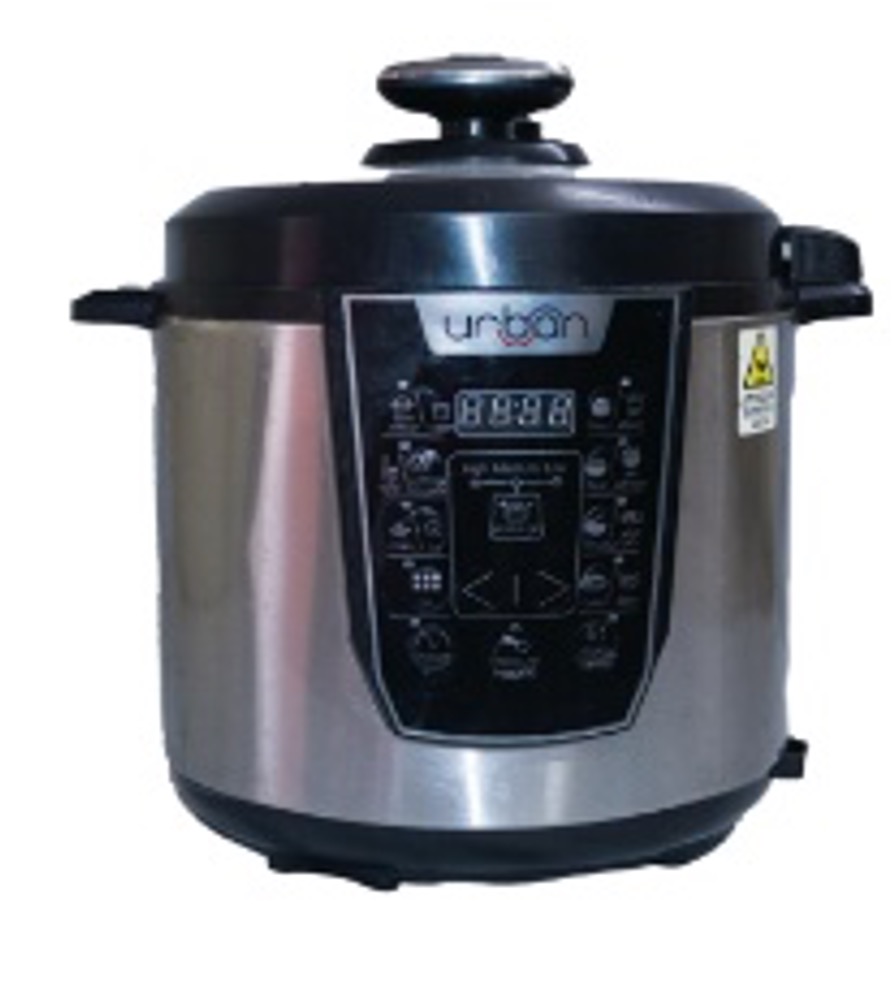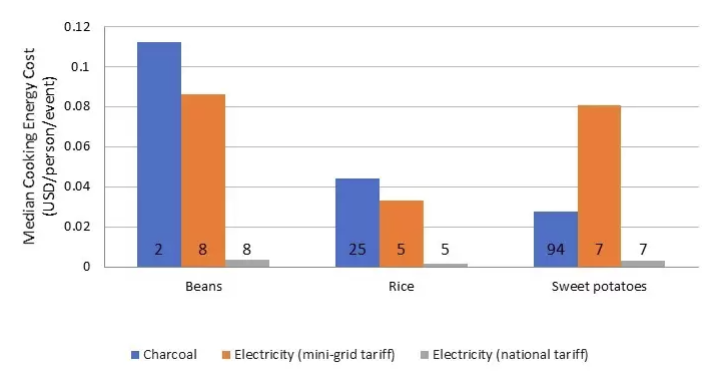The Energy Catalyst Accelerator Programme (ECAP) supports a range of energy access projects, including several with a clean cooking focus, accelerating the innovation in technology and business models needed to deliver energy access and clean cooking solutions to communities across Africa, Asia and the Indo-Pacific. In a recent webinar on trends and off-grid applications, ECAP partnered with Modern Energy Cooking Services (MECS), a UK aid-funded programme that aims to break out of business-as-usual approaches and rapidly accelerate the transition to modern energy cooking on a global scale. Rather than regarding energy access as a separate issue from clean cooking, MECS collaborates with stakeholders to address both challenges simultaneously. Drawing upon its considerable body of research, MECS shared keys insights on the clean cooking challenge, integrating electric cooking (eCooking) in off-grid settings and the role of carbon finance.
The global clean cooking challenge Around 2.3 billion people cook with polluting biomass (e.g. wood, charcoal) or solid fuels (e.g. coal), which causes an estimated 3.2 million premature deaths each year from household air pollution (WHO, 2023). It also has severe implications for health, gender relations, economic livelihoods, environmental quality and climate, with women and children disproportionally impacted.

1.8 billion currently have access to electricity yet still cook with biomass, so how can we can reduce that number? The answer lies in driving the adoption of e-cooking appliances, although each type comes with pros and cons that determine their suitability for the local context.
Electric hotplates: affordable but less efficient.
Induction cookers: versatile, easy to use, but require specific cookware.
Electric pressure cookers (EPCs): energy saving, cost saving and convenient, but higher upfront appliance cost for consumers.
Newer innovations could be adopted: e.g. air fryers.
MECS research provides critical evidence demonstrating how eCooking can be adopted easily and economically in their 15 focus countries, e.g. EPCs can often save 50% on cooking costs.
Opportunities and challenges for integrating eCooking in mini-grid communities
For mini-grid communities, EPCs are the ‘front running candidate’. Electric pressure cookers typically offer multiple features contributing to low energy use, including cooking at pressure, insulated casing, and on/off cycles during operation. This very low energy consumption is the key to reducing customer costs in the form of high tariffs, and minimising demands on mini-grid capacity. Rice and slow cookers come a close second in terms of low energy use, and there is also scope for beneficially introducing induction, infrared, and air fryers.
eCooking appliances can cook dishes quickly, easily and cheaply, typically providing cost savings compared to charcoal and LPG cooking, and MECS’s goal is to improve the availability of affordable, reliable and sustainable modern energy cooking services. This approach recognises cultural preferences and the likelihood that people cooking in domestic settings are using multiple cookers simultaneously.
What is the financial case for these communities to cook with electricity?
Mini-grids set much higher tariffs than national grid tariffs and that causes challenges for consumers. Using data from Tanzania, analysis from MECS tracked the costs of cooking with different fuels.
- At the national tariff, cooking with an EPC would be cheaper than using traditional fuels.
- At the mini-grid tariff, it can still be cost effective to cook certain foods with an EPC.
- Even a tariff of $0.6/kWh cooking with electricity would still be cost effective for half of households (assuming charcoal prices remained the same).

Why do people in mini-grid communities choose to cook with electricity?
Research undertaken by A2EI in Tanzania and PEEDA in Nepal confirmed the multiple benefits of cooking with EPCs after adoption by the end-user.
In the A2EI pilot, consumers mainly used EPCs for rice, beans and hot drinks. They tended to make minor adjustments to their menu to create simpler meals with fewer dishes. Users liked the convenience, particularly the reduced meal preparation and cooking times. In the PEEDA pilot, consumers mainly used EPCs for rice and dal, and their menu typically did not change at all. In this study, users reported found EPCs easy to use, and convenient due to the fact that the stoves needed less monitoring. They also reported health benefits from the lack of indoor smoke, but some disliked the fact that EPCs only have one pot, which means that dishes cannot be cooked concurrently.
How can mini-grids accommodate additional cooking loads?
MECS research has shown some microgrids already have sufficient power capacity to support some adoption of eCooking appliances and research shows that eCooking does not produce higher voltage drops than specified at the system design stage. However, where system design more closely matches baseload (non-cooking) characteristics, high eCooking adoption without system rearrangements could be difficult, due to the fact that cooking loads often coincide with peaks in non-cooking electrical demand.
To mitigate issues and enable higher adoption, mini-grids could undertake conventional upgrades, such as installing additional inverter modules. Operators could also deploy Active Networks Management and Demand Side Management. However, the greatest potential for accommodating higher adoption rates is from integrating eCooking into the planning and sizing of an off-grid system from the start, enabling eCooking to become a value-added proposition as an anchor client. Time-of-use (ToU) tariffs can also assist by encouraging customers to schedule their electrical appliance usage.
Scope for innovative carbon finance methodologies to address the affordability gap
It has been a turbulent year for carbon finance with a number of journalistic revelations throwing the methodologies of carbon offsetting into dispute. The issue of transparency and equitable revenue sharing has become a major controversy.
However, Gold Standard’s new metered methodology developed by MECS and Climate Impact Partners enhances verification and accuracy. It was recently rated as the most accurate of all cookstove methodologies by the University of Berkeley and is beginning to command premium carbon pricing.
Recent MECS research has tested paying people carbon credits based on usage data through a ‘cook-to-earn’ system. An ATEC, MECS & FairClimateFund pilot in Cambodia and Bangladesh directly linked an incentive payment to the use of the device. Key findings include:
- Micropayments drive usage in new customers: increase in usage, ranged from 38% to 56%, compared to the control group.
- Micropayments also alter existing customer usage: increase in usage ranged from 1% to 21% compared to their prior non-incentivised usage.
- Communicating the benefit is key.
This “cook-to-earn” approach presents a paradigm shift from cooking being an ‘enduring problem’ to making it a vehicle to support income and reduce expenditure within households.
The new Global Electric Cooking Coalition (GeCCo)
With the possibilities brought by climate and carbon finance, the transition to eCooking has attracted a lot of attention. Four anchor partners – EnDev, Global Energy Alliance for People and Planet (GEAPP), MECS, and Sustainable Energy For All – have formed a new coalition focused on eCooking. The Global eCooking Coalition (GeCCo) will bring together a wide range of eCooking advocates already actively supporting the transition to eCooking globally.
What will GeCCo do?
- Work alongside other existing global and national initiatives promoting higher-tier cooking transitions.
- Provide leadership, integration, knowledge and funding that is exclusively focused on the rapid global scaling of electric cooking.
- Involve strong coordination with integrated energy sector planning, including sustained and effective evidence-driven engagement with grid and off-grid electricity supply actors: investors, utilities, regulators, operators, off-grid providers, etc.
At the outset of the initiative in September 2023, GeCCo stated their intention to foster an electric cooking transition for at least 10% of households and institutions in at least 10 countries by 2030.
Conclusion
Integrating eCooking into the planning and sizing of an off-grid system from the start unlocks opportunities for eCooking to become a value-added proposition as an anchor client. Moreover, innovative carbon finance methodologies can bridge the eCooking affordability gap, even turning eCooking into a vehicle to support the income and reduce the expenditure of households.